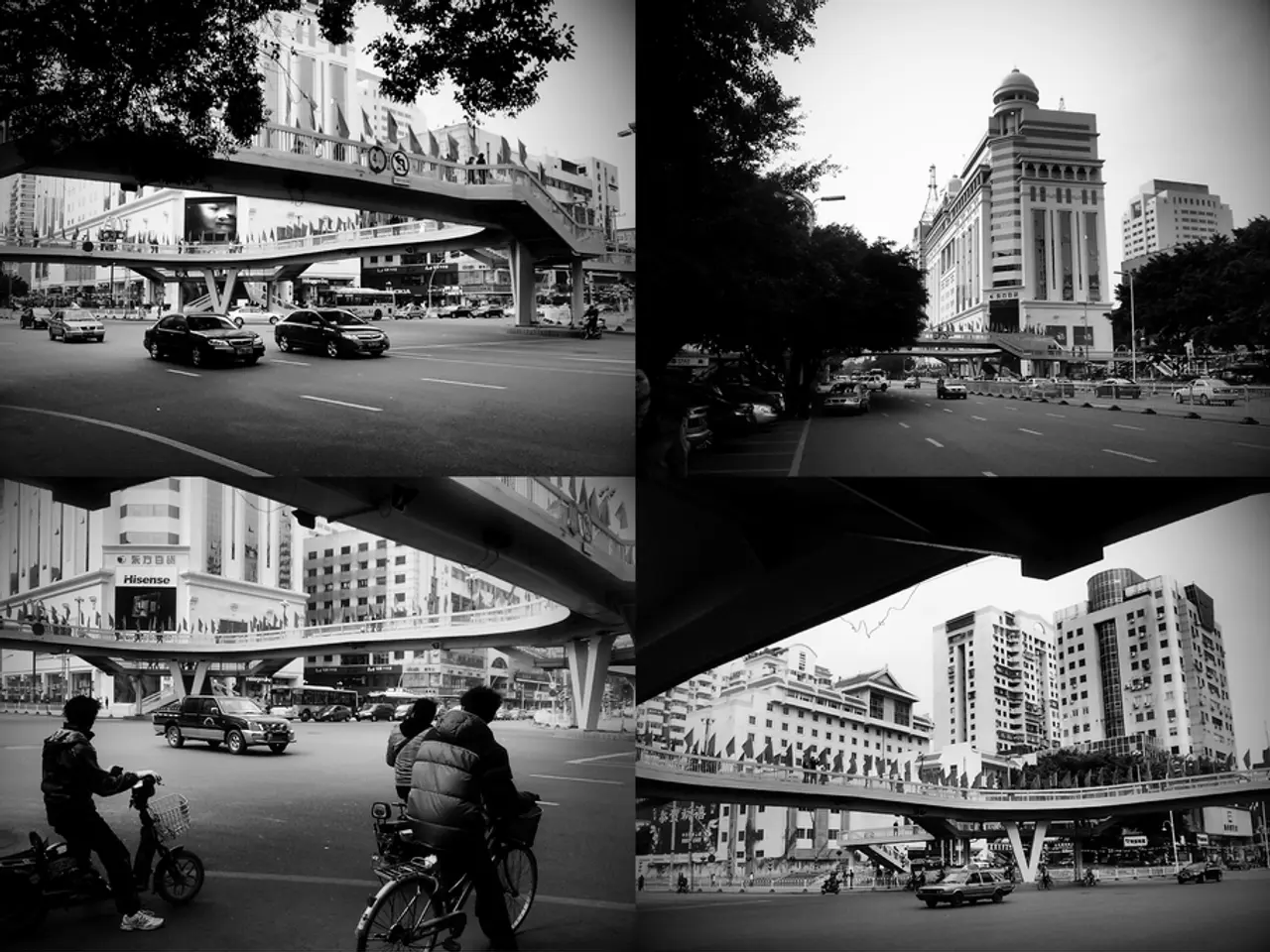Present State of the Textile and Garment Industry in Vietnam: A Snapshot
Vietnam's textile and apparel sector spikes up export figures
Vietnam's textile and apparel industry is aggressively pushing through steady growth and a strengthening presence in the international market, thanks to well-timed strategies in the face of evolving international hurdles.
As per data from April 15, the nation's total textile and garment export earnings have reached a whopping $1.8 billion, marking a 8.7% increase compared to the same period in 2024.
Latest statistics from the Customs General Department reveal encouraging growth in major export markets. The US continues to be Vietnam's largest client, with a market share swelling from 36.3% to 38%, closely followed by enhancements in the EU (9.1% to 9.4%) and Japan (10.8% to 11%).
Such growth is considered a hopeful sign, even amidst unstable market conditions and falling global consumer demand resulting from the US's reciprocal tax policy.
However, the industry encountered rough waters in early April when the US announced a temporary 10% tariff on Vietnamese textile and garment imports, causing distress within the sector due to halted orders and uncertainty.
Despite this, the 90-day grace period before implementing tariffs on import goods is being deemed a "golden opportunity" for enterprises to ramp up production and exports.
Industry insiders anticipate the final quarters of 2025 to be filled with unpredictable demand and ongoing trade tensions.
In response, many businesses have started drafting contingency plans while closely monitoring negotiations between Vietnam and the US on tax rates.
In the immediate term, Vietnam's garment companies are embracing diversification tactics – expanding into new markets, bolstering domestic sales, and streamlining raw material management.
They are also investing in services, workforce training, and retail operations to boost overall resilience.
Garment 10 Corporation reported revenue of VNĐ1.25 trillion ($48 million) during the initial quarter, a 12% increase YoY.
Hugaco also recorded a 10% revenue increase and confirmed orders through July, with extensions in talks for the rest of the year.
However, Hugaco's chairman, Nguyễn Xuân Dương, voiced concerns about unequal tax policies among competing textile-exporting nations, warning that such disparities could erode Vietnam's competitive edge, shifting orders to countries with cheaper labor costs.
According to the Viet Nam National Textile and Garment Group (Vinatex), the US tariff grace period provides a vital chance for Vietnam's manufacturers to step up production and exports before potential tariffs kick in.
Despite relative order stability, upstream sectors such as yarn are experiencing strain, with some companies suspending operations due to supply chain bottlenecks. This underscores the necessity of cultivating an integrated and self-sufficient industrial structure.
To enhance market responsiveness, the chairman of the Viet Nam Textile and Apparel Association (Vitas), Vũ Đức Giang, emphasized the importance of agility. With 22 next-gen free trade agreements either in effect or pending, Vietnam's firms are well-positioned to diversify both clients and product lines, a crucial factor in achieving the sector's $48 billion export target for the year.
Vinatex chairman, Lê Tiến Trường, urged companies to maximize productivity in the second quarter of 2025 by extending regulated overtime, reorganizing production lines, and securing reserves to withstand the uncertainties of the latter half of the year.
Trường also stressed the need for transparency in sourcing and compliance with anti-fraud regulations. Vinatex is actively fostering internal material sourcing, market-by-market risk assessments, and broader efforts to diversify products and partners to minimize market dependencies. - VNS
Additional Insights:
- Global Competitiveness: Vietnam's textile and apparel industry is positioning itself as a preferred sourcing hub through the utilization of free trade agreements, real-time demand fulfillment, and rapid delivery to avoid inventory accumulation[1].
- Eco-Friendly Production: Commitment to sustainable production practices such as renewable energy adoption, wastewater recycling, and zero-waste manufacturing is helping Vietnam attract eco-conscious global brands[4].
As of April 15, Việt Nam's total textile and garment export turnover reached US$1.8 billion. - VNA/VNS Photo
[1] Souce: Higher Fashion Standards Shaping the Garment Industry in Vietnam[2] Source: Vietnam's Textile and Garment Sector Faces Challenges[3] Source: US Announces Trade Tariffs on Imported Vietnamese Garments[4] Source: The Evolution of Sustainable Textiles in Vietnam)
- In response to the 90-day grace period before implementing tariffs on import goods, many businesses are ramping up production and exports.
- The US's temporary 10% tariff on Vietnamese textile and garment imports has caused distress within the sector, leading to halted orders and uncertainty.
- The textile and apparel industry in Vietnam is looking to expand into new markets and bolster domestic sales to increase resilience against unfavorable trade policies.
- To achieve the sector's $48 billion export target for the year, companies are diversifying clients and product lines, capitalizing on Vietnam's 22 next-gen free trade agreements.
- In an effort to minimize market dependencies, Vinatex is actively fostering internal material sourcing, market-by-market risk assessments, and broader efforts to diversify products and partners.
- Despite the US tariff grace period providing a chance for manufacturers to step up production and exports, upstream sectors like yarn are experiencing strain due to supply chain bottlenecks.
- In 2025, the final quarters are anticipated to be filled with unpredictable demand and ongoing trade tensions as businesses continue to monitor negotiations between Vietnam and the US on tax rates.




